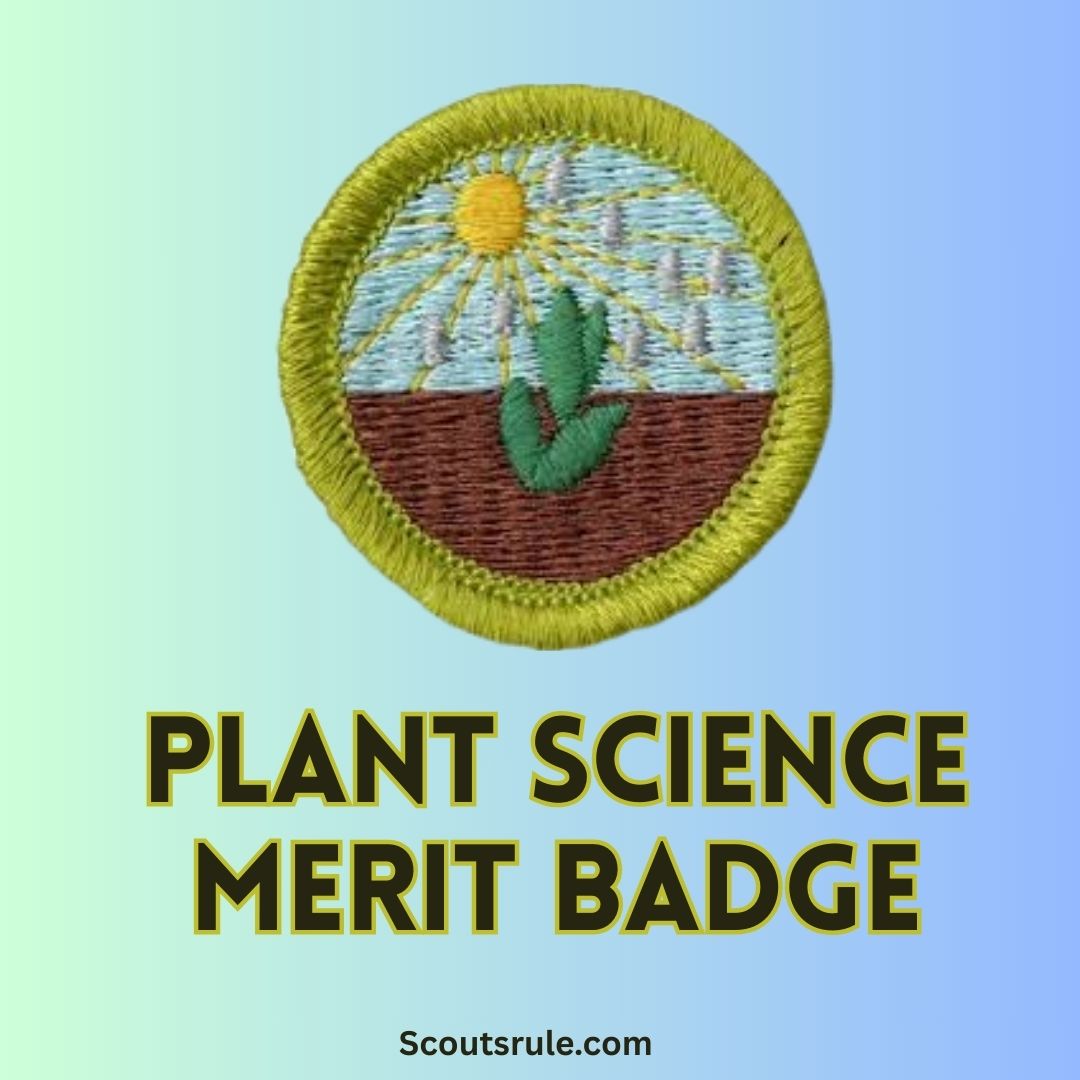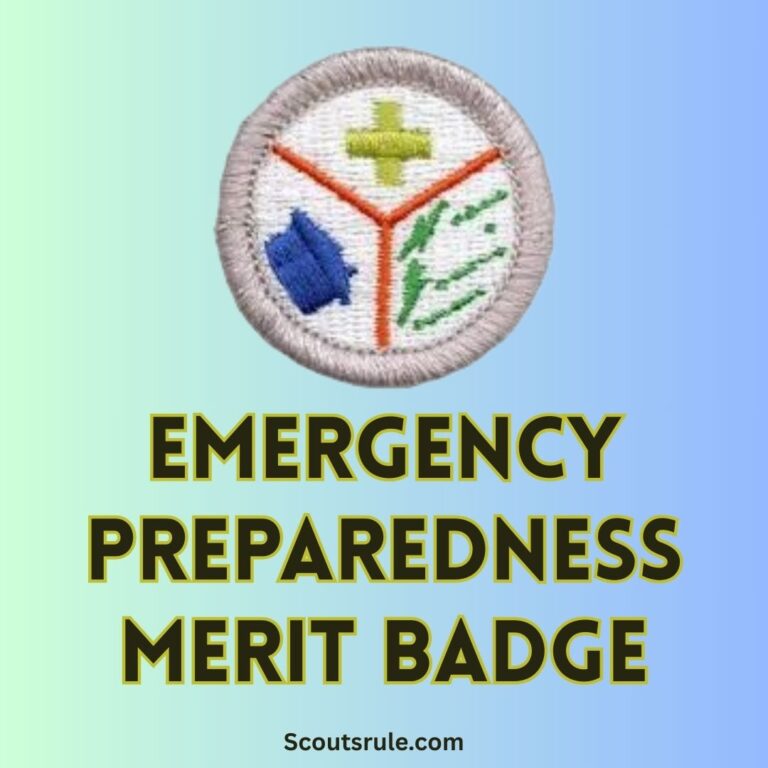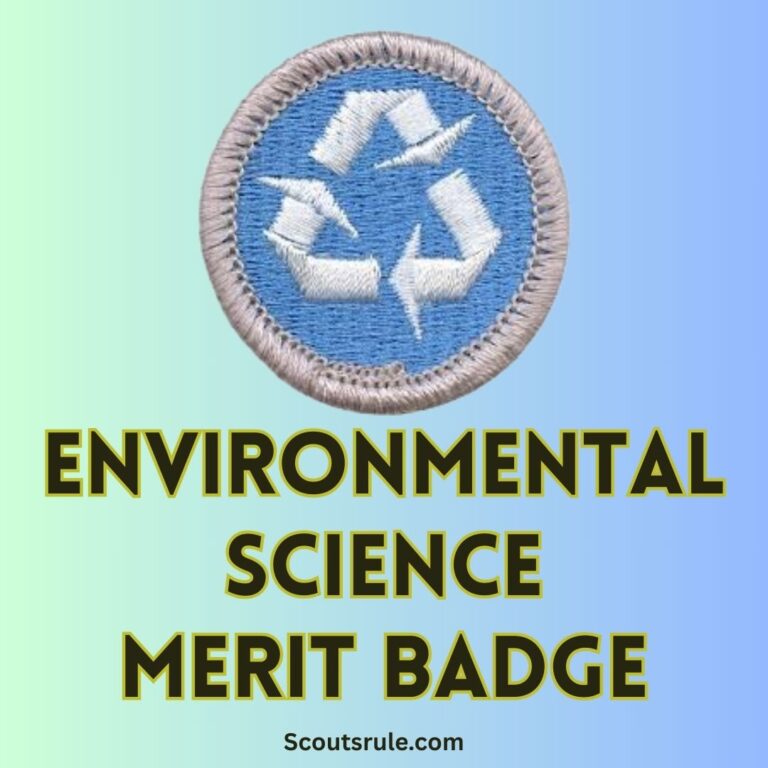
Imagine a world without plants—a barren, lifeless place devoid of the beauty, food, oxygen, and raw materials that plants provide. The Plant Science Merit Badge invites you to explore this verdant world, from the elegant structure of a flower to the complex interdependencies of ecosystems. As a Scout, you’ll learn how plants function, why they are essential to all life on Earth, and how humans rely on them in countless ways.
Post Contents
- 1. Introduction: The Wonders of Plant Science
- 2. The Importance of Plant Science
- 3. Overview of the Plant Science Merit Badge Requirements
- 4. Detailed Exploration of Requirements
- 4.1 Requirement 1: Drawing and Identifying Parts of a Flowering Plant
- 4.2 Requirement 2: Explaining Photosynthesis and Human Dependence on Plants
- 4.3 Requirement 3: The Role of Pollinators in Plant Reproduction
- 4.4 Requirement 4: Environmental Factors Affecting Plants and Soil Science
- 4.5 Requirement 5: Propagation Techniques and Hands-On Growth
- 4.6 Requirement 6: Identifying Native, Cultivated, and Invasive Plants
- 4.7 Requirement 7: Exploring Careers in Agronomy, Horticulture, and Botany
- 5. Practical Tips and Additional Projects
- 6. Conclusion: Cultivating a Lifelong Appreciation for Plants
1. Introduction: The Wonders of Plant Science
This merit badge is much more than an academic exercise—it is a journey into the heart of nature. Through hands-on activities, detailed observations, and engaging discussions, you will develop a deeper understanding of plant biology and ecology. Whether you envision yourself studying plants in a laboratory, managing sustainable crops, or simply nurturing a garden, the skills and insights you gain through this merit badge will remain with you for life.
2. The Importance of Plant Science
Plants are the foundation of life on Earth. They produce oxygen through photosynthesis, form the basis of food chains, and provide habitats for a multitude of organisms. Culturally and economically, plants have evolved from humble beginnings into essential components in medicine, art, architecture, and industry. Understanding plant science can:
- Help preserve biodiversity and natural ecosystems.
- Improve agricultural yields through better understanding of soil, growth factors, and pest management.
- Inspire innovations in sustainable practices, such as eco-friendly building materials and renewable energy sources.
- Equip you with the knowledge to advocate for environmental protection and responsible resource management.
By studying plant science, you join a global community of scientists, farmers, and environmentalists who work to ensure that our planet remains vibrant and livable.
3. Overview of the Plant Science Merit Badge Requirements
The designed requirements for the Plant Science Merit Badge cover several key areas of plant biology, ecology, and practical horticulture. In general, you will be expected to:
- Make a drawing and identify five or more parts of a flowering plant, explaining the function of each part.
- Explain photosynthesis and describe at least five ways that humans depend on plants.
- Explain the role of honeybees and other pollinating insects in plant reproduction.
- Explain how environmental factors such as water, light, temperature, air, and pests affect plant growth; describe soil—the texture, structure, and composition of fertile soil—and how soil may be improved.
- Explain methods of plant propagation (by seeds, roots, cuttings, tubers, and grafting) and grow a plant using at least one of these methods.
- List by common name a specified number of native and cultivated plants that grow near your home, as well as list invasive, nonnative plants in your area and discuss control measures.
- Research and tell about careers in fields related to plant science, such as agronomy, horticulture, and botany.
These requirements are designed to combine theoretical knowledge with hands-on experience, thereby fostering a comprehensive understanding of plants and their vital role in our lives.
4. Detailed Exploration of Requirements
Below you’ll find an in-depth discussion of each requirement, along with ideas for projects, observations, and activities that will help you not only meet but exceed the expectations of the badge.
4.1 Requirement 1: Drawing and Identifying Parts of a Flowering Plant
In this assignment, you are asked to make a detailed drawing of a flowering plant and label at least five of its parts. The drawing should be clear enough to show the following features:
- Roots: Explain that roots anchor the plant and absorb water and essential nutrients from the soil.
- Stem: Describe how the stem supports the plant, transports fluids (water, minerals, and sugars) between the roots and leaves, and sometimes stores nutrients.
- Leaves: Identify the leaves as the primary sites of photosynthesis, noting the role of chlorophyll in capturing light energy.
- Flower: The flower is the reproductive structure of the plant. Emphasize its role in attracting pollinators and facilitating the reproduction process.
- Fruit and Seeds (if applicable): Some flowering plants develop fruits that contain seeds. Explain how fruits protect the seeds and help in their dispersal.
As you work on this drawing, use a real flower—either from your garden or a local park—as a reference. Pay attention to detail, noting the differences in size, shape, and color of each part. Write a brief description next to each labeled section explaining its function. This exercise builds an essential foundation in botany and helps you develop observational skills.
4.2 Requirement 2: Explaining Photosynthesis and Human Dependence on Plants
Photosynthesis is the process by which plants convert sunlight into chemical energy. Your task is to:
- Explain the Process: Detail the chemical equation for photosynthesis (6 CO₂ + 6 H₂O + light energy → C₆H₁₂O₆ + 6 O₂) and explain how chlorophyll facilitates this reaction. Emphasize that this process produces oxygen and glucose, both of which are critical for life on Earth.
- List Five Ways Humans Depend on Plants: Provide detailed explanations for each, such as:
- Food Production: Plants are the base of the human diet, including fruits, vegetables, grains, and legumes.
- Oxygen Production: The oxygen released during photosynthesis is essential for human respiration.
- Medicine: Many plants are used in traditional and modern medicine for treating various ailments.
- Materials: Plants provide wood, fibers, and other materials used in construction, textiles, and everyday products.
- Environmental Services: Plants help to stabilize the environment by absorbing pollutants, preventing soil erosion, and supporting biodiversity.
Through diagrams, detailed narratives, and perhaps even a simple experiment (like demonstrating a model of photosynthesis using colored light and leaves), this requirement encourages you to explore how fundamental the process is to life.
4.3 Requirement 3: The Role of Pollinators in Plant Reproduction
Pollinators, such as honeybees, butterflies, and other insects, are essential for the reproduction of many plants. For this requirement, you should:
- Explain How Pollination Works: Describe the process in which pollen, the male reproductive cell, is transferred from the anther (part of the stamen) in one flower to the stigma (the female part) of another flower (or the same flower, in self-pollinating species).
- Emphasize the Role of Honeybees: Explain that honeybees and other insects collect nectar and inadvertently transfer pollen as they move from flower to flower. This process not only enables fertilization but also contributes to genetic diversity within plant species.
- Include Discussion on Other Pollinators: Discuss the role of birds or bats in pollination (depending on the region), and explain how different plants have evolved unique features to attract specific pollinators.
- Human Impact: Consider including a brief note on the current challenges pollinators face—like habitat loss and pesticide exposure—and how this affects our food supply and ecosystems.
Including images or diagrams of flower structures and pollinators can visually enhance your explanation and demonstrate your understanding of this crucial ecological process.
4.4 Requirement 4: Environmental Factors Affecting Plants and Soil Science
Plants are affected by a variety of environmental conditions. In this part, you should:
- Discuss How Water, Light, Air, Temperature, and Pests Affect Plants: For each of these factors, explain:
- Water: How proper water availability influences plant growth and how too little or too much water can cause stress.
- Light: The importance of sunlight in driving photosynthesis and the effects of shade versus full sun.
- Air: How the concentration of CO₂ and oxygen affect photosynthetic efficiency.
- Temperature: Optimal temperature ranges for various plant species and the impact of frost or heat stress.
- Pests: How insects, fungi, and other pests can damage plants, and what natural or artificial means can help mitigate these problems.
- Describe the Nature and Function of Soil: Explain the components of fertile soil—minerals, organic matter, water, and air—and how each contributes to plant health. Cover basic concepts such as:
- Texture: The relative proportions of sand, silt, and clay.
- Structure: How soil particles bind together to form aggregates, which affect drainage and aeration.
- Composition: The nutrients and organic compounds that support plant growth.
- Soil Improvement: Discuss methods of improving soil quality, such as adding organic matter, using cover crops, and balancing pH. This might include a small project like testing soil in your local garden or discussing how composting contributes to soil fertility.
4.5 Requirement 5: Propagation Techniques and Hands-On Growth
In plant science, propagation is the process of creating new plants from seeds, cuttings, tubers, or grafting. You’ll need to:
- Describe Various Propagation Methods: Explain how seeds, roots, cuttings, tubers, and grafting are used to reproduce plants, including the pros and cons of each method.
- Undertake a Propagation Project: Choose one method and grow a plant using that technique. For example, you might start a small garden bed with seeds, root a cutting from a houseplant, or experiment with grafting techniques on a common fruit tree. Document the process with photos, notes, and observations over time.
- Reflect on the Process: Describe any challenges encountered, the growth progress, and what the experience taught you about plant reproduction. This hands-on project helps bridge the gap between theory and practical application.
4.6 Requirement 6: Identifying Native, Cultivated, and Invasive Plants
Understanding the diversity of plants in your region is key to plant science:
- List Native and Cultivated Plants: Research and compile a list of at least 10 native plants (those naturally occurring in your area) and 10 cultivated plants (those planted by humans) that you often see near your home or in your community.
- Identify Invasive Species: Include at least five invasive, nonnative plants that exist in your area. Explain why these species are considered harmful—addressing their impact on local ecosystems, outcompetition of native species, and potential economic damage.
- Discuss Control Methods: Explain strategies for preventing or controlling the spread of invasive plants. Focus on management practices that do not harm humans, wildlife, or the environment, such as manual removal, biological controls, or community awareness programs.
Documenting this information not only fulfills the badge requirements but also familiarizes you with local biodiversity and the importance of conservation.
4.7 Requirement 7: Exploring Careers in Agronomy, Horticulture, and Botany
Plant science offers diverse career opportunities. For this requirement, you must:
- Research Related Careers: Investigate careers in agronomy, horticulture, botany, and related fields. Look into the educational requirements, typical day-to-day responsibilities, and the impact that professionals in these fields have on food production, environmental conservation, and scientific research.
- Prepare a Report or Presentation: Summarize your findings in a written report or a presentation. Discuss which careers might interest you and why, exploring how your personal interests and the skills you’ve developed through the merit badge might align with one of these paths.
- Consider Job Outlook and Future Opportunities: Reflect on how emerging technologies, climate change, and sustainable practices are shaping these fields. Consider how innovations like precision agriculture, genetic engineering, or sustainable urban landscaping are creating new roles for plant scientists.
Exploring these career options will help solidify your understanding of the practical importance of plant science and might even inspire your future educational and professional endeavors.
5. Practical Tips and Additional Projects
Apart from fulfilling the requirements, here are some practical tips to deepen your engagement:
- Keep a Journal: Record your observations, group discussions, experiment results, and reflections throughout this process. A detailed journal not only helps with projects but also acts as a portfolio of your plant science journey.
- Engage in Field Visits: Visit local botanical gardens, nature reserves, or community gardens to see how professional horticulturists manage plant life. This real-world experience will enrich your understanding and provide tangible examples of healthy plant ecosystems in action.
- Join or Start a Garden Club: Collaborating with peers on a gardening project can show you different propagation techniques, allow you to work with native species, and foster teamwork. Documenting a group garden project often provides valuable insights into the practical aspects of plant care.
- Utilize Digital Tools and Resources: Websites like Scoutles.com and the official BSA Merit Badge Hub offer supplementary resources, sample reports, and discussion prompts. Use these tools to double-check your work and gain new perspectives.
- Discuss With Experts: Consider interviewing a local horticulturist or a botany professor. Their first-hand knowledge can enrich your project and provide unique insights beyond textbooks.
6. Conclusion: Cultivating a Lifelong Appreciation for Plants
The Plant Science Merit Badge is not simply about learning plant parts or conducting experiments—it is about joining a community of individuals who are passionate about understanding and protecting the natural world. As you explore the biology of flowering plants, the life-giving process of photosynthesis, the delicate interplay between pollinators and plant reproduction, and the practical considerations of soil and propagation, you will develop a comprehensive perspective that spans art, science, and environmental stewardship.
By documenting your findings, engaging with field projects, and reflecting on how plants influence every aspect of our lives, you grow not only as a Scout but as a conscientious citizen and lifelong learner. The practical skills, analytical thinking, and creativity you develop through the Plant Science Merit Badge will serve you well—whether you choose a future career in the plant sciences or simply decide to advocate for sustainable practices in your community.
Embrace every opportunity to plan, plant, observe, and reflect. Let your scientific curiosity drive you to explore further, and let your hands-on experiences transform abstract concepts into a living, growing reality. The journey from seed to bloom mirrors your own growth as you move from simple observation to a profound understanding of the natural world—and perhaps even to making a positive impact on the environment around you.

Hi, Robin here, A former lead Scout and here I share my inspiring stories about USA Scouts, leadership, adventure, how to guides and more.






